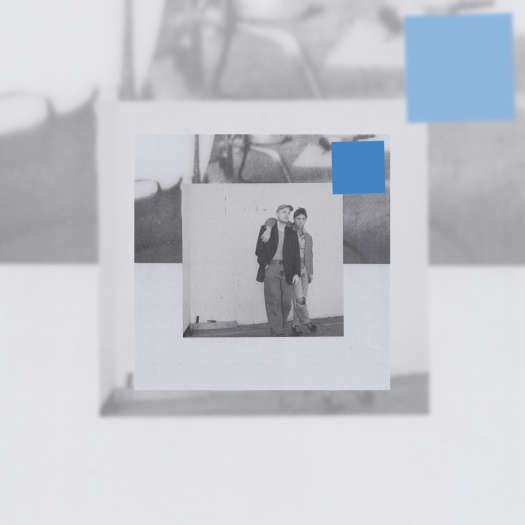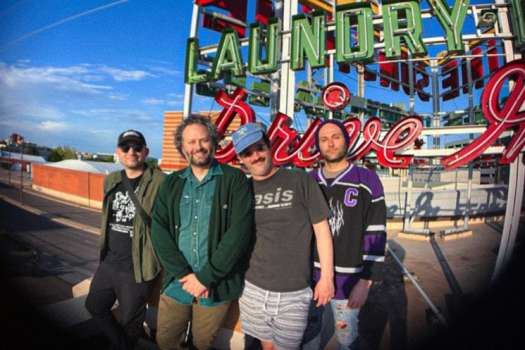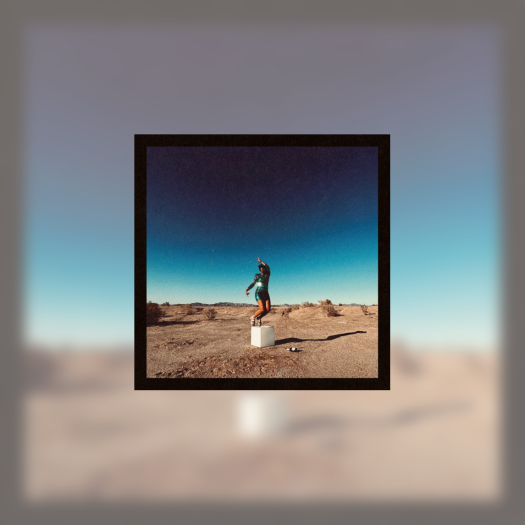In the early 2010s, it suddenly became possible for guitar bands to earn a ton of hype with a non-existent studio budget, as acts like Best Coast, Wavves and Dum Dum Girls turned no-fi recording into a fashionable aesthetic. A band could record an album using a built-in laptop mic and suddenly find themselves signed to a record label and getting mainstream press coverage.
From out of this buzzy scene emerged Montreal's No Joy, their blurred-out vocals drowning in a murky morass of shoegaze fuzz. They quickly signed with Mexican Summer (surely one of the coolest labels in lo-fi indie rock thanks to signings like Washed Out and Real Estate) for a series of early singles and the well-received debut album Ghost Blonde in 2010.
By the time they got to their second album, it was time for No Joy to level up, retaining their shoegaze grit while also adding a new dimension of studio-honed craftsmanship thanks to the involvement of producer Jorge Elbrecht (who has since gone on to work with Japanese Breakfast and Ariel Pink). Wait to Pleasure, released in 2013, is a best-of-both worlds scenario: every bit as squalling as their earliest work, but with multifaceted arrangements that reflected a careful recording process. The grinding fuzz of "Hare Tarot Lies" hits all the harder because of its wafting jangle pop passages, while "Blue Neck Riviera" nods toward electronic music with its fizzy beats, and closer "Uhy Yuoi Yoi" adds acoustic strumming to the band's dream pop palate.
Wait to Pleasure is a gorgeously recorded piece of dream pop, pointing the way forward for a sonic evolution that, most recently, led the band to fully embrace acoustic orchestrations on 2021's Can My Daughter See Me from Heaven EP.
Wait to Pleasure came out on April 23, 2013, and to mark the album's 10th anniversary, it's getting a reissue through Mexican Summer and Hand Drawn Dracula (out today and available here) with two bonus tracks: "Dorion" and "Beauty." Exclaim! caught up with No Joy leader Jasamine White-Gluz to discuss the lost album that they scrapped before Wait to Pleasure, misheard lyrics getting spread on the internet, and the butt-dial that made it onto the album.
What do you remember about making Wait to Pleasure?
We had recorded an entire album right after Ghost Blonde, our first LP. We finished mixing and, before it went to master, we decided to scrap it. I don't know if there was a definitive reason why we canned it — I know I didn't feel it was our best work. I thought we could push ourselves more, and Keith at Mexican Summer suggested we try recording again but with a producer named Jorge Elbrecht. We released some of those scrapped songs as the Negaverse EP, and brought a couple others to rearrange in the new studio sessions. Jorge Elbrecht was a major factor in WTP, he instantly became a member of the band and got us to push ourselves creatively. I learned so much about songwriting and production from working with Jorge. The recordings were done during the very end of summer in Brooklyn. We were all partying so much and recording late into the night. It's cheesy to say, but there was something about the energy while recording WTP that I knew it was going to be something special. It was the first time I went into a studio with the time and space to explore songs and just have fun with them.
What does this record mean for you as a band — both at the time it first came out, and now in hindsight?
At the time, I didn't really think too much about it. I felt really confident in the album, and it sounded more kaleidoscopic than I could have ever imagined. Anytime we played tracks for the label or for friends, they all had this sort of stunned reaction, so I had a feeling we were at least onto something different, good or bad. In hindsight, this record changed how I approach producing music. Not everything needs to be planned out. Not everything needs to be designed to recreate live. Sometimes, the best parts of a recording come from being spontaneous and building in the moment.
Listening back to Wait to Pleasure 10 years later, what stands out?
There are many little studio Easter eggs throughout the album that make me laugh. My vocals running through a wall of guitar amps in "E," a stupid poem we made up called "Stop the Pollution" in "Lunar Phobia," [drummer] Garland [Hastings]'s mom's accidental butt-dial voicemail in Uhy Yuoi Yoi — all these small details remind me of how much fun the album was to make.
Is there anything you wish you had done differently on Wait to Pleasure? Conversely, are there any qualities of Wait to Pleasure that you wish you had carried forward to subsequent albums?
I wish I would have released the lyrics. My original intention with hiding the lyrics was to keep the songs open for interpretation so the listener could connect to the song with whatever they hear. But then the wrong lyrics, especially for "Hare Tarot Lies," kept popping up online and are so wrong and so weird. The wrong lyrics are about snow and kisses and "flying beauty," which are not words I sing in the song. I'm as preoccupied about the weather as any Canadian, but I swear this song is not about the winter. I've shared the right ones, but it seems like the internet likes the wrong lyrics better. For the record, the chorus is, "You take me up sometimes just to find a way to bring me back down"
Looking at your Spotify page, many of No Joy's top and trending songs come from Wait to Pleasure. What is it about this album that makes it particularly resonate with fans?
I don't pay that much mind to numbers on streamers. To me, it just means one song landed on a popular playlist so that's what people who casually listen find. I think most people who connect with Wait to Pleasure connect to it as a full album. The album arrived at a time that made it resonate with people, and at an era in the music industry where it was granted a chance to be heard widely.
Wait to Pleasure is getting reissued. How will this experience of digging into the album again influence what No Joy do next?
I actually dug into Wait to Pleasure when I started putting together Motherhood. I wanted to recreate, in a way, the looseness and openness of that recording experience. I learned that this method is the one that suits me best. The studio was for exploring, tearing songs apart and adding bizarre ideas and having fun.
Your most recent full-length was 2020's Motherhood. What's next for No Joy?
There have been some big changes for me personally since 2020. I used some of those experiences to explore and shape a new album I am producing with Fire-Toolz. I'm very excited about it. Circumstances forced me to move out of Montreal and relocate to a more rural setting. It's taken some adjustment, but it has also been really inspiring and freeing. I've made some pretty wild new music because of it.
No Joy Discuss Sonic Easter Eggs and Their Scrapped Second Album as 'Wait to Pleasure' Turns 10
"It's cheesy to say, but there was something about the energy while recording 'WTP' that I knew it was going to be something special," says Jasamine White-Gluz

Photo courtesy of the artist
BY Alex HudsonPublished Jun 23, 2023



